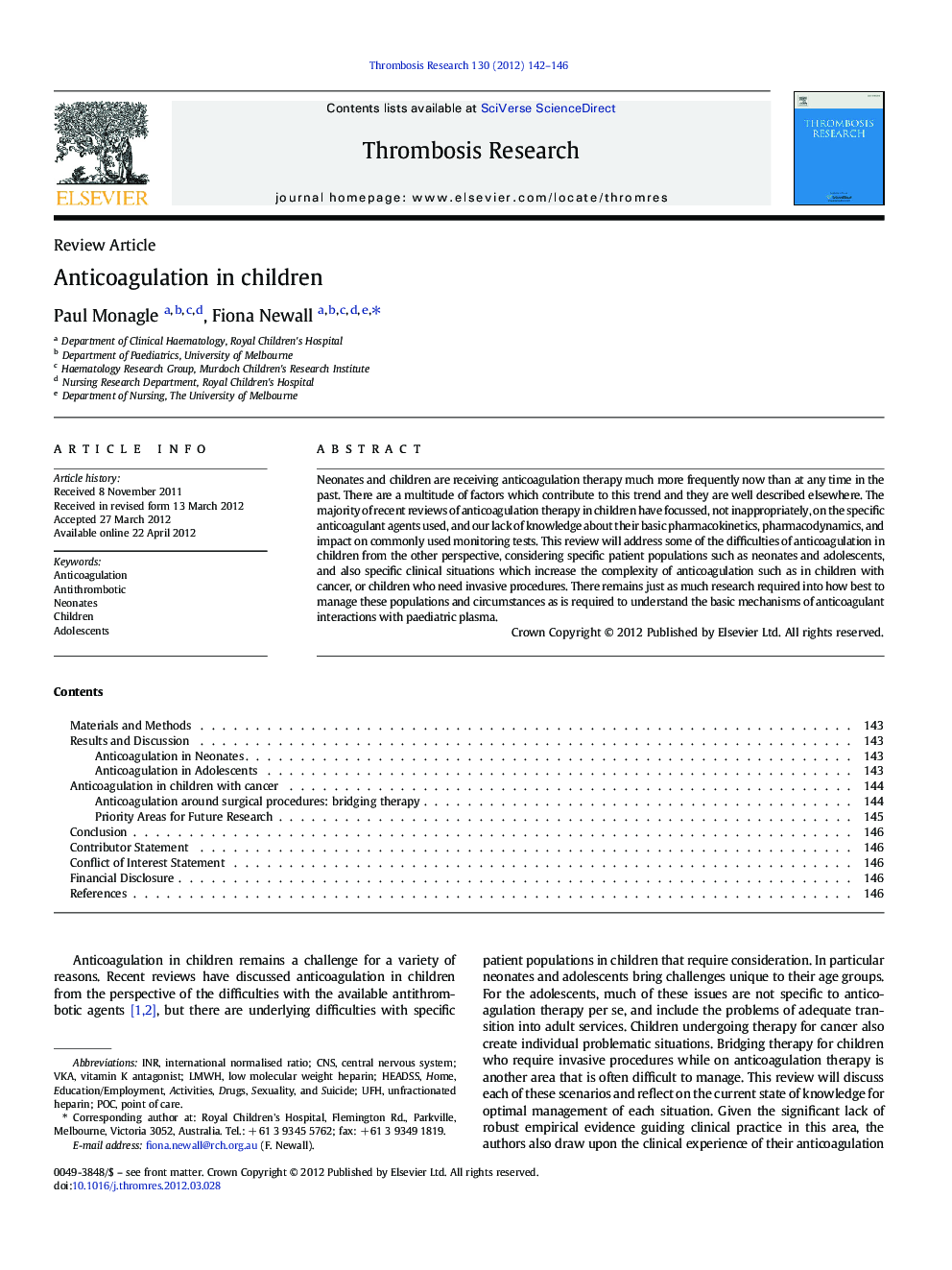| Article ID | Journal | Published Year | Pages | File Type |
|---|---|---|---|---|
| 6003449 | Thrombosis Research | 2012 | 5 Pages |
Neonates and children are receiving anticoagulation therapy much more frequently now than at any time in the past. There are a multitude of factors which contribute to this trend and they are well described elsewhere. The majority of recent reviews of anticoagulation therapy in children have focussed, not inappropriately, on the specific anticoagulant agents used, and our lack of knowledge about their basic pharmacokinetics, pharmacodynamics, and impact on commonly used monitoring tests. This review will address some of the difficulties of anticoagulation in children from the other perspective, considering specific patient populations such as neonates and adolescents, and also specific clinical situations which increase the complexity of anticoagulation such as in children with cancer, or children who need invasive procedures. There remains just as much research required into how best to manage these populations and circumstances as is required to understand the basic mechanisms of anticoagulant interactions with paediatric plasma.
